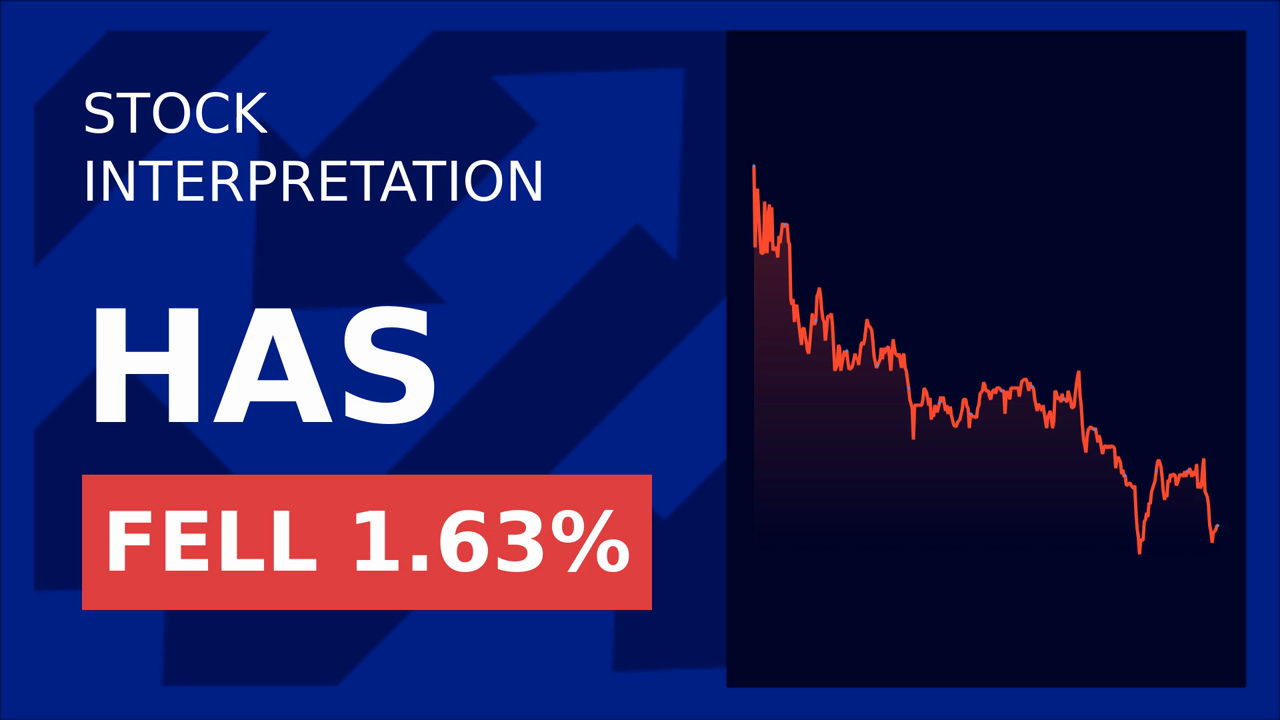Hasbro Beats 1Q Estimates as Profitability Improves, Driven by Gaming Dominance
Hasbro, Inc. (NASDAQ: HAS) delivered a robust first-quarter performance, exceeding Wall Street expectations as profitability surged across its high-margin segments. The toymaker’s Q1 2025 results highlight a strategic pivot toward gaming and digital content, with Magic: The Gathering and Dungeons & Dragons propelling growth while the company navigates macroeconomic headwinds. Let’s dissect the numbers and assess the investment implications.
The Gaming Engine: Wizards of the Coast Leads the Charge
The Wizards of the Coast and Digital Gaming segment was the star of the quarter, posting a 46% revenue surge to $462.1 million, with operating profit soaring 87% to $230 million (a 49.8% margin). This segment’s dominance is fueled by:
- Magic: The Gathering: Revenue jumped 45% to $346.3 million, benefiting from strong demand for both tabletop and digital formats (ARENA).
- Monopoly Go!: The new mobile game contributed $39 million in revenue, signaling Hasbro’s success in monetizing classic brands through digital channels.
- Dungeons & Dragons: Continued popularity of the tabletop RPG, with expansions and licensing deals boosting engagement.

Profitability Soars Amid Strategic Focus
Hasbro’s adjusted operating profit jumped 50% to $222.4 million, with margins expanding to 25.1%, reflecting a sharper focus on high-margin businesses. The company’s cost discipline—driven by its $1 billion cost-savings initiative—is paying off, particularly in the Wizards segment, where margins rose 11 percentage points year-over-year.
Meanwhile, the Consumer Products segment, which includes brands like Marvel, Beyblade, and Transformers, saw revenue dip 4% to $398.3 million due to licensing headwinds. However, operating margins improved 1.4 percentage points to -7.8% (adjusted), thanks to cost controls. The Entertainment segment struggled with a 5% revenue decline to $26.7 million, but adjusted profits held steady at $17 million, underscoring resilience in its film and TV partnerships.
Balance Sheet Strength and Capital Allocation
Hasbro reduced debt by $50 million and returned $98 million to shareholders via dividends (a $0.70 per share payout was declared). The dividend yield, now at 1.5%, offers investors modest income while the company invests in growth.
Risks and the Road Ahead
Despite the strong quarter, Hasbro faces challenges:
- Tariffs and geopolitical risks: The company reiterated uncertainties around global trade policies, which could pressure margins in its international markets.
- Execution in digital markets: While Monopoly Go! is a hit, sustaining momentum in gaming requires ongoing innovation.
- Consumer Products segment drag: Licensing declines and margin pressures here remain a wildcard.
Conclusion: A Bullish Bet on High-Margin Growth
Hasbro’s Q1 results affirm its strategic shift toward gaming and digital content is working. With adjusted EBITDA up 59% year-over-year to $274.3 million, the company is leveraging its iconic IP to drive profit growth in higher-margin areas. The $1 billion cost-savings target—already showing progress—adds further tailwinds.
Investors should note that while Hasbro’s stock has underperformed the S&P 500 over the past year, its valuation looks compelling. At a forward P/E of 14x (vs. the industry average of 18x), the stock offers upside if growth accelerates. The dividend provides stability, and the company’s focus on digital gaming—where Magic: The Gathering Arena and Monopoly Go! are scaling—positions it to capitalize on the $30 billion tabletop gaming market, projected to grow at a 6% CAGR.
In summary, Hasbro’s Q1 results are a green light for long-term investors. While macro risks linger, the company’s profitability improvements and strategic bets on gaming make it a compelling play in the toy and entertainment sector.
Final Take: Buy the dip. Hasbro’s mix of high-margin growth, disciplined capital allocation, and IP strength make it a rare value in a pricey market.


_442a2dcc1749832873286.jpeg)
_e68fac6d1749831664430.jpeg)
_7ec1ebd71747841642812.jpeg)





